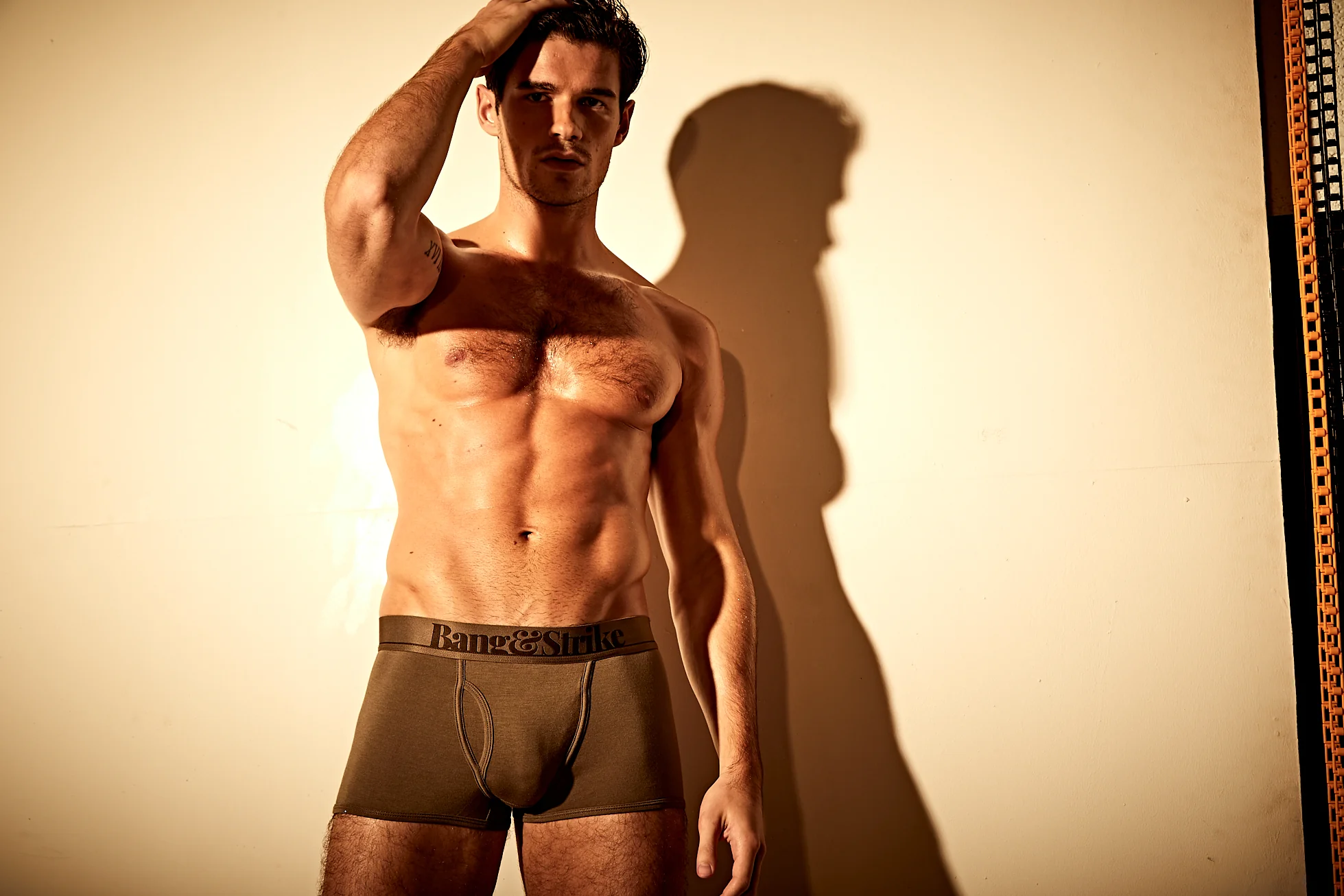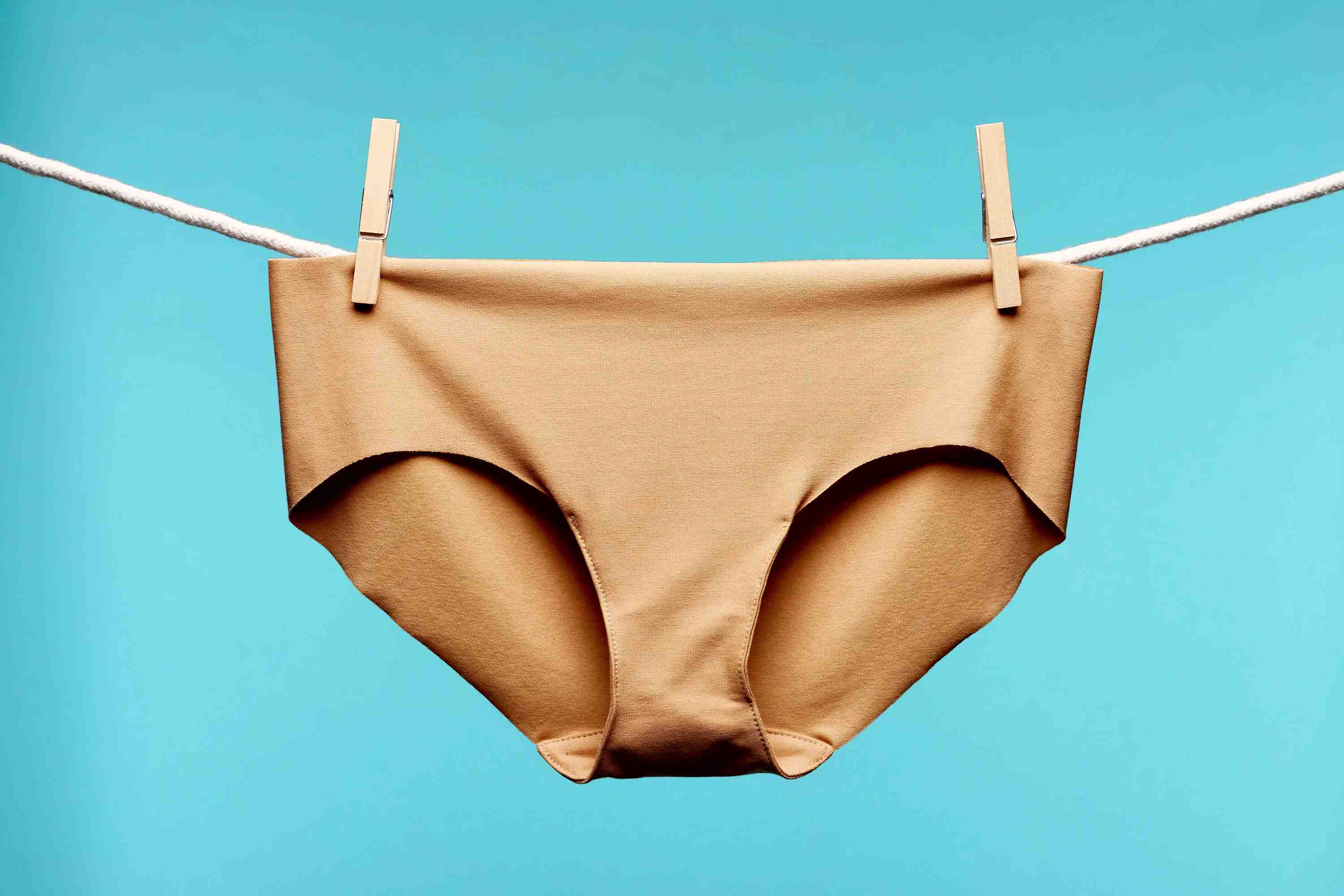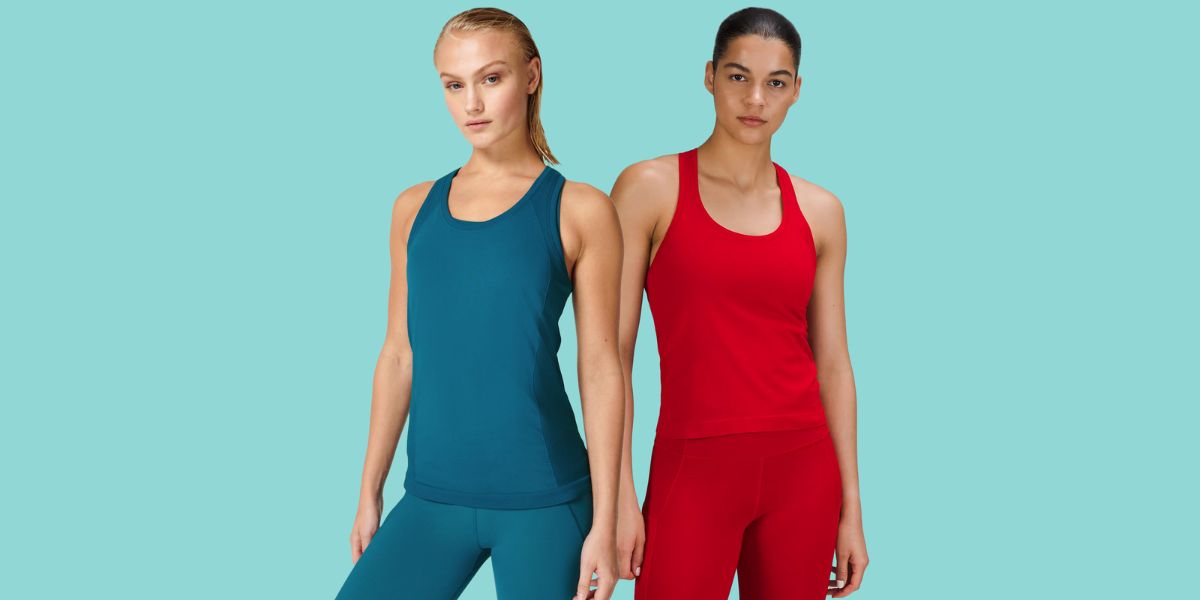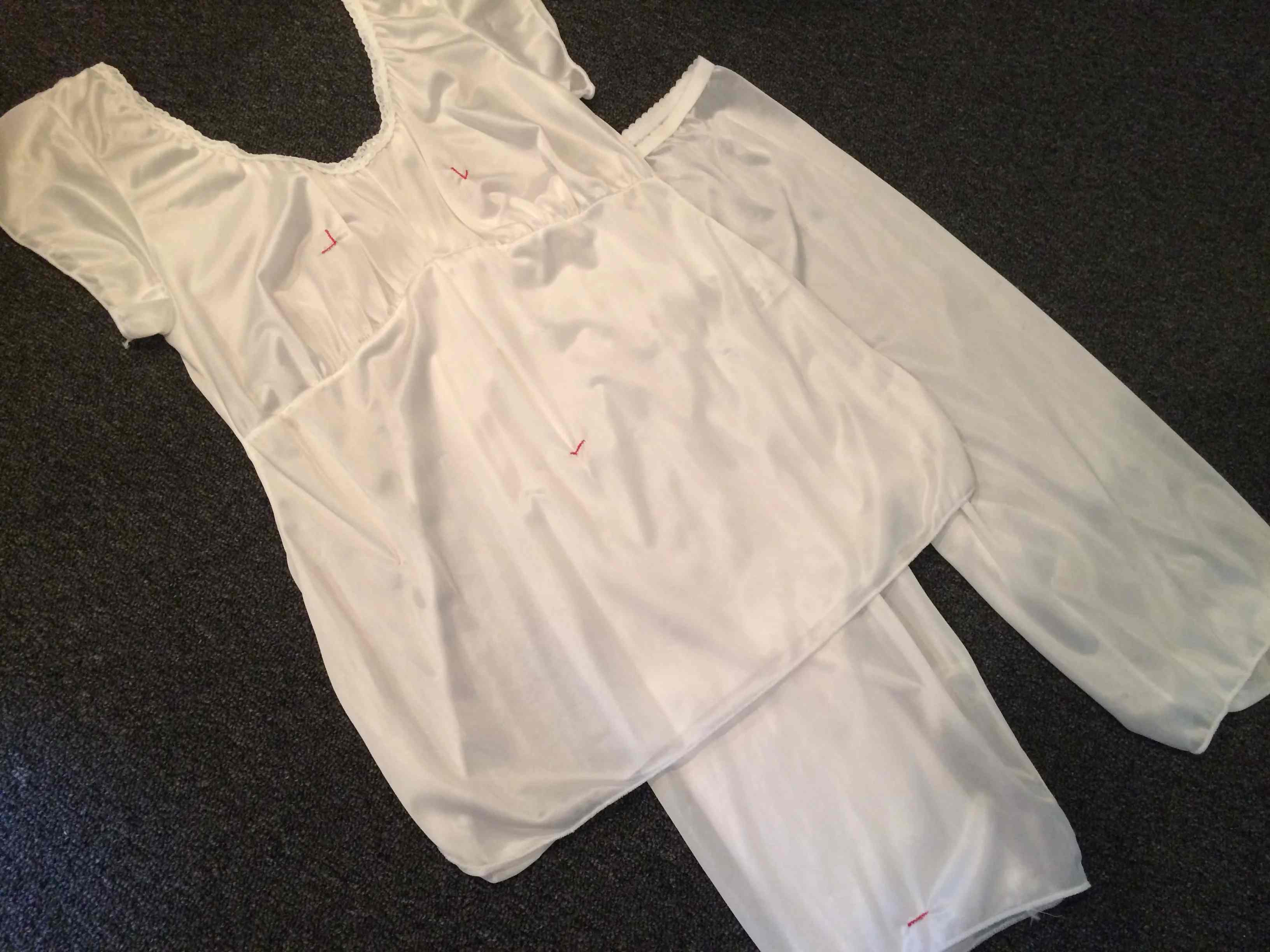Home>Latest Posts>What Is Compression Underwear
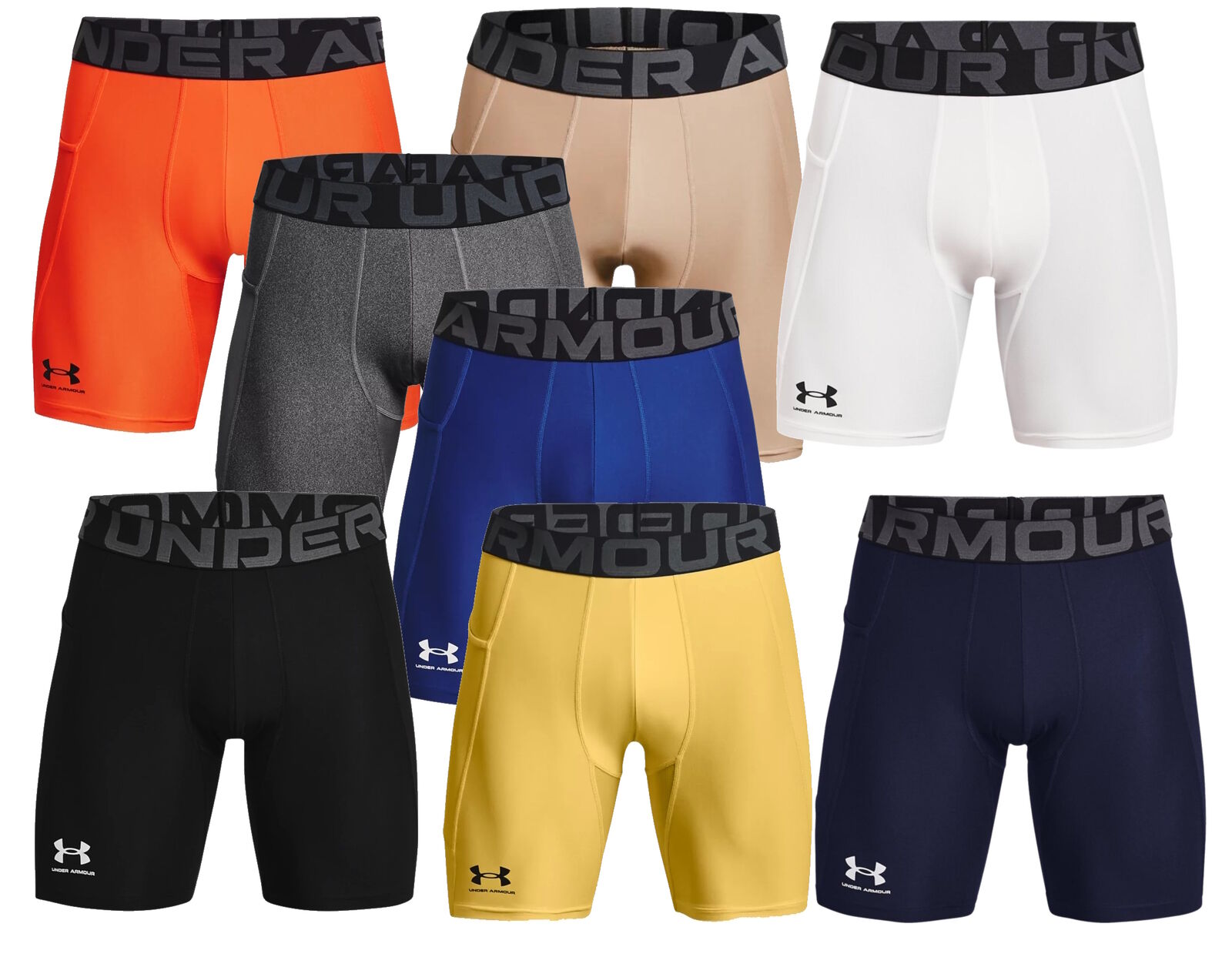

Latest Posts
What Is Compression Underwear
Published: July 31, 2023
Discover the different types of underwear, including compression underwear, and learn why it's essential for your comfort and support. Find out more!
(Many of the links in this article redirect to a specific reviewed product. Your purchase of these products through affiliate links helps to generate commission for Under-tec.com, at no extra cost. Learn more)
Table of Contents
- Introduction
- Definition of Compression Underwear
- Benefits of Compression Underwear
- How Compression Underwear Works
- Types of Compression Underwear
- Choosing the Right Compression Underwear
- How to Wear Compression Underwear Properly
- When and Where to Wear Compression Underwear
- Potential Side Effects of Compression Underwear
- Conclusion
Introduction
When it comes to selecting underwear, there are plenty of options to choose from. From boxers to briefs, thongs to boy shorts, the choices may seem endless. However, one type of underwear that has been gaining popularity in recent years is compression underwear. Whether you are an athlete looking for added support during workouts or someone looking to improve circulation and alleviate discomfort, compression underwear offers a range of benefits.
Compression underwear is designed to apply pressure to specific areas of the body, promoting better blood flow and muscle containment. While initially used primarily by athletes, compression underwear has become more accessible to the general public due to its potential health benefits. Whether you’re an athlete, a frequent traveler, or someone looking for everyday comfort, compression underwear may be worth considering.
In this article, we will explore what compression underwear is, its benefits, how it works, the different types available, and how to choose the right one for your needs. We will also discuss how to properly wear compression underwear and when and where it is most beneficial to incorporate into your daily routine. Additionally, we will touch on potential side effects to be aware of, ensuring you have all the necessary information to make an informed decision.
So, let’s delve into the world of compression underwear and discover how it can improve your daily life.
Definition of Compression Underwear
Compression underwear refers to a form-fitting garment that applies graduated pressure to different areas of the body, typically made from elastic materials such as spandex or nylon. Unlike traditional underwear that focuses solely on providing coverage, compression underwear offers an additional level of support, promoting improved blood circulation and muscle containment.
The key feature of compression underwear is the level of pressure it applies to specific areas, which is measured in millimeters of mercury (mmHg). This pressure is usually highest at the extremities, such as the ankles or wrists, and gradually decreases as it moves towards the core of the body. This pattern is known as graduated compression and is what sets compression underwear apart from other types of underwear.
Compression underwear is often used in various contexts, including athletic performance, post-surgical recovery, and everyday wear. Athletes may wear compression underwear to enhance endurance, reduce muscle fatigue and soreness, and aid in recovery by improving oxygen and nutrient delivery to the muscles. Compression underwear can also be beneficial for individuals with certain medical conditions, such as varicose veins or lymphedema, as it helps improve circulation and reduce swelling.
It’s important to note that compression underwear is not a one-size-fits-all solution. The level of compression required depends on individual needs and the intended purpose of wearing the underwear. Different levels of pressure are available, ranging from mild (15-20 mmHg) to moderate (20-30 mmHg) to high (30-40 mmHg). It is recommended to consult with a healthcare professional to determine the appropriate level of compression for your specific needs.
Overall, compression underwear provides targeted support, promotes better circulation, and aids in muscle containment. It can be a valuable addition to your underwear collection, offering both aesthetic appeal and potential health benefits.
Benefits of Compression Underwear
Compression underwear offers a range of benefits that make it a popular choice among athletes, individuals with certain medical conditions, and those seeking everyday comfort. Here are some of the key advantages of wearing compression underwear:
- Improved circulation: The graduated pressure applied by compression underwear helps facilitate better blood flow, especially in areas where circulation may be compromised. This can have various benefits, such as reducing swelling, preventing blood pooling, and improving oxygen and nutrient delivery to muscles.
- Enhanced performance and recovery: Athletes often turn to compression underwear to improve their performance and aid in post-workout recovery. The increased blood flow and muscle containment provided by compression underwear can result in reduced muscle fatigue, faster recovery times, and improved endurance.
- Reduced muscle soreness: Compression underwear can help alleviate muscle soreness by minimizing muscle vibrations during physical activity. This can be particularly beneficial for activities that involve repetitive movements, such as running or weightlifting.
- Support for medical conditions: Compression underwear is often recommended for individuals with certain medical conditions. For example, it can help in the management of varicose veins, as it promotes better circulation and prevents blood from pooling in the veins. Compression underwear can also aid in the treatment of lymphedema, a condition characterized by fluid retention and swelling.
- Improved body contouring: Compression underwear provides a snug and supportive fit, which can help enhance body contouring and create a smoother silhouette. This can be particularly appealing for those who wish to have a more streamlined appearance under their clothing.
- Comfort and support: Compression underwear is designed to offer a high level of comfort and support throughout the day. The elastic materials used in its construction provide a secure fit without feeling restrictive, ensuring that you can move freely and comfortably in various activities.
These are just a few of the benefits that compression underwear can provide. Whether you are an athlete looking for improved performance, someone with specific medical needs, or simply seeking enhanced comfort and support, compression underwear can be a valuable addition to your wardrobe.
How Compression Underwear Works
Compression underwear works by applying graduated pressure to different parts of the body, promoting better blood circulation and muscle support. The key principle behind its functionality is the use of graduated compression, where the pressure is highest at the extremities and gradually decreases as it moves closer to the core of the body.
When you wear compression underwear, the tightness and pressure exerted on the muscles and blood vessels can have several positive effects. Here’s a breakdown of how compression underwear works:
- Improved blood flow: The tight fitting nature of compression underwear helps to compress the veins and arteries, encouraging blood to flow more efficiently back towards the heart. This can prevent blood pooling, reduce swelling, and enhance the delivery of oxygen and nutrients to the muscles.
- Muscle containment: Compression underwear applies gentle pressure to the muscles, helping to reduce muscle vibrations during physical activity. This can minimize muscle oscillation and subsequent fatigue, thereby improving performance and reducing the risk of injuries.
- Decreased muscle soreness: The compression provided by the underwear can help reduce muscle soreness, especially after intense workouts. By minimizing muscle oscillation and increasing blood circulation, compression underwear can facilitate faster recovery and alleviate post-exercise muscle discomfort.
- Support for ligaments and tendons: Compression underwear can provide support to ligaments and tendons near joints, helping to stabilize and reduce the risk of strain or injury. This is particularly beneficial for individuals engaged in activities that place stress on these areas, such as running or jumping.
- Temperature regulation: Some types of compression underwear incorporate innovative materials that offer moisture-wicking and temperature-regulating properties. These features help to keep you cool and dry during physical activity, enhancing comfort and performance.
It’s important to note that the effectiveness of compression underwear can vary depending on factors such as the level of compression, fit, and proper sizing. It’s essential to choose compression underwear that is appropriate for your specific needs and activities. Consulting with a healthcare professional or expert in compression apparel can help you select the best option for your requirements.
Overall, compression underwear works by applying pressure to target areas, improving blood flow, muscle support, and overall comfort. Whether you’re an athlete looking to enhance performance or someone seeking better circulation and muscle recovery, compression underwear can provide the necessary support for a wide range of activities.
Types of Compression Underwear
Compression underwear comes in various styles and designs, each catering to different needs and preferences. Here are some of the common types of compression underwear available:
- Compression shorts: Compression shorts are typically worn by athletes and provide compression to the thighs and glutes. They are designed to improve muscle support, reduce muscle vibration, and enhance performance during activities that involve lower body movements, such as running or basketball.
- Compression leggings: Compression leggings are similar to compression shorts but offer coverage from the waist down to the ankles. They are often used in activities that require full leg support, such as weightlifting or yoga. Compression leggings provide muscle containment and improved circulation throughout the legs.
- Compression tops: Compression tops are designed to provide support to the upper body, including the chest, back, and shoulders. They can be beneficial for athletes engaged in activities that involve upper body movements, such as swimming or weightlifting. Compression tops can promote better posture, aid in muscle recovery, and reduce muscle soreness.
- Compression socks: Compression socks focus primarily on the lower extremities, providing compression to the feet, ankles, and calves. They are commonly used to improve blood circulation, minimize swelling, and prevent the formation of blood clots during long periods of sitting, standing, or traveling. Compression socks are ideal for individuals with circulatory issues or those who spend extended periods on their feet.
- Compression briefs: Compression briefs are similar to traditional underwear but incorporate compression technology for added support. They are often worn by individuals seeking general comfort and improved circulation throughout the pelvic region. Compression briefs can be beneficial for those with sensitive skin or individuals who prefer a more discreet compression solution.
It’s important to consider the intended use and specific requirements when choosing the type of compression underwear. Factors such as the level of compression, fabric technology, and personal comfort should also be taken into account.
Additionally, compression underwear may come in different levels of compression, ranging from mild to moderate to high, depending on individual needs and medical recommendations. It’s advisable to seek guidance from a healthcare professional or compression apparel expert to determine the appropriate level and type of compression underwear for your specific needs.
Remember, the key is to find compression underwear that fits comfortably and fulfills your desired level of support, whether you’re an athlete looking for improved performance or someone seeking better circulation and muscle recovery.
Choosing the Right Compression Underwear
Choosing the right compression underwear is crucial to ensure optimal comfort, support, and functionality. Here are some factors to consider when selecting compression underwear:
- Level of compression: Assess your needs and consult with a healthcare professional to determine the appropriate level of compression for your specific condition or activity. Mild compression (15-20 mmHg) is suitable for everyday wear and mild discomfort, while moderate to high compression (20-30 mmHg or above) is typically used for athletic performance or medical purposes.
- Fabric: Look for compression underwear made from high-quality, breathable fabrics that offer moisture-wicking and odor-resistant properties. Common materials include spandex, nylon, or a blend of both. Check for comfort, durability, and the ability to keep you cool and dry during exercise or prolonged wear.
- Fits and follows your body shape: Ensure that the compression underwear fits snugly but comfortably on your body, without causing any restriction or discomfort. Consider the specific fit and cut of the underwear (such as shorts, leggings, or briefs) that suit your needs and provide optimal support to the desired areas of your body.
- Size and measurement: Take accurate measurements of your waist, hips, thighs, or any other specific body areas that the compression underwear will cover. Refer to the manufacturer’s sizing chart to select the appropriate size. Choosing the right size will ensure that the compression garment works effectively and provides the intended support.
- Quality and brand reputation: Research and choose compression underwear from reputable brands known for their quality materials, construction, and design. Read customer reviews and look for feedback on the durability, comfort, and effectiveness of the compression underwear before making a purchase.
- Specific features: Consider any specific features you may need, such as seamless construction, tagless design, or targeted compression zones. These features can enhance comfort and reduce irritation, especially during prolonged wear or intense physical activity.
Remember that every individual’s needs may vary, so it’s essential to select compression underwear that caters to your unique requirements. If in doubt, consult with a healthcare professional or compression garment specialist who can provide personalized recommendations based on your specific needs and conditions.
By considering these factors and taking the time to research and try different options, you can find the ideal compression underwear that provides the support, comfort, and functionality necessary for your activities and overall well-being.
How to Wear Compression Underwear Properly
Properly wearing compression underwear is essential to ensure maximum effectiveness and comfort. Here are some guidelines to follow when putting on and wearing compression underwear:
- Choose the right size: Select the correct size of compression underwear based on your measurements and the manufacturer’s sizing chart. Avoid choosing a smaller size, as this can cause discomfort and restrict blood flow.
- Put them on correctly: Start by turning the compression underwear inside out. Insert your foot into the leg opening and gradually roll the underwear up your leg. Take care when pulling the fabric to avoid overstretching or putting too much pressure on one area. Repeat this process for the other leg.
- Adjust and smooth: Once the compression underwear is in place, gently adjust and smooth out any wrinkles or folds. Ensure that the fabric is evenly distributed and not bunched up in any particular area.
- Pay attention to waistband placement: Position the waistband of the compression underwear at your natural waistline or the desired level of support. Make sure it is snug but comfortable, without digging into your skin or causing discomfort.
- Avoid excessive tightness: While compression underwear should feel snug, it should not be overly tight. If you experience any pain, numbness, or tingling, it may be an indication that the compression is too high or the underwear is too small. Reassess the size and level of compression to ensure proper fit and comfort.
- Wear them when needed: Decide when and where you need to wear compression underwear based on your specific requirements. Some individuals may need to wear compression underwear for extended periods, such as during travel or physical activities, while others may only require them for certain activities or as part of a recovery routine.
- Frequent washing: Follow the manufacturer’s instructions for washing and care to maintain the quality and effectiveness of the compression underwear. Regularly washing the garment prevents the buildup of sweat, bacteria, and odor.
- Listen to your body: Pay attention to any discomfort, skin irritation, or changes in sensation while wearing compression underwear. If you experience persistent discomfort or adverse effects, consult a healthcare professional.
It’s important to note that the guidelines above are general recommendations, and it’s always advisable to refer to the specific instructions provided by the manufacturer of the compression underwear you have chosen. If you have any concerns or questions about wearing compression underwear, consult with a healthcare professional or compression garment specialist for personalized guidance.
By following these tips and wearing compression underwear properly, you can maximize the benefits and comfort provided by this type of garment.
When and Where to Wear Compression Underwear
Compression underwear can be worn in various situations and settings, depending on your individual needs and lifestyle. Here are some examples of when and where compression underwear can be beneficial:
- Athletic activities: Compression underwear is commonly worn during athletic activities to enhance performance, support muscles, and aid in recovery. Whether you are running, weightlifting, cycling, or participating in team sports, compression underwear can provide the necessary support and stabilization for your muscles.
- Travel: Prolonged periods of sitting or standing during travel can lead to swelling, discomfort, and the risk of deep vein thrombosis (DVT). Wearing compression socks or compression underwear with graduated pressure can help improve circulation, prevent blood clots, and reduce swelling during long flights or road trips.
- Post-surgical recovery: Compression underwear is often recommended after certain surgical procedures, such as liposuction or abdominoplasty (tummy tuck). It can help reduce swelling, provide support to the treated area, and aid in the healing process. Follow your healthcare provider’s instructions on when and how long to wear compression underwear after surgery.
- Everyday wear: Many people choose to wear compression underwear as part of their daily routine to support overall comfort, posture, and circulation. Whether you have a physically demanding job, spend long hours on your feet, or simply enjoy the added support and muscle containment, compression underwear can be worn throughout the day.
- Sports recovery: Consider wearing compression underwear after intense workouts or sporting events to facilitate muscle recovery. The gentle pressure provided by compression underwear can help reduce muscle soreness, minimize swelling, and assist in the removal of metabolic waste products from the muscles.
- Medical conditions: Compression underwear is often recommended for individuals with specific medical conditions. Conditions such as varicose veins, lymphedema, or chronic venous insufficiency can benefit from the compression provided by these undergarments. Consult with a healthcare professional to determine if compression underwear is suitable for your condition and to understand the appropriate level of compression.
Remember, the decision to wear compression underwear and the specific situations in which it is beneficial may vary from person to person. It’s important to assess your needs, consult with a healthcare professional if necessary, and make an informed decision based on your unique circumstances.
Ultimately, compression underwear can be worn in a wide range of scenarios to provide support, improve circulation, and enhance overall comfort and well-being.
Potential Side Effects of Compression Underwear
While compression underwear can provide numerous benefits, it’s important to be aware of potential side effects that may occur in some individuals. Here are some possible side effects of wearing compression underwear:
- Discomfort or skin irritation: Compression underwear that is too tight or made from materials that irritate the skin can cause discomfort, chafing, redness, or itching. It’s important to choose the right size, ensure a proper fit, and select high-quality materials to minimize the risk of skin-related side effects.
- Impaired circulation: If the compression underwear is too tight or the level of compression is excessive, it can potentially impede blood circulation. This can lead to numbness, tingling, or a feeling of pins and needles in the affected area. It’s crucial to choose the appropriate level of compression and consult with a healthcare professional if you experience any circulation issues.
- Allergic reactions: Some individuals may be allergic or sensitive to certain materials used in compression underwear. This can result in allergic reactions, such as rashes, hives, or dermatitis. If you develop any allergic symptoms, discontinue use and consult with a healthcare professional or allergist for appropriate guidance.
- Decreased range of motion: The compressive nature of compression underwear can limit the range of motion, particularly if the garment is too tight or restricts movement in certain areas. This can be problematic, especially for activities that require a wide range of motion or flexibility.
- Increased body temperature: Depending on the fabric and design, compression underwear may retain heat and cause excessive sweating. This can lead to discomfort, skin irritation, or contribute to the risk of heat-related conditions. Look for compression underwear with moisture-wicking properties to help regulate body temperature.
- Dependency on compression: In some cases, individuals who regularly wear compression underwear may become reliant on its support and find it uncomfortable or challenging to go without it. This dependency should be monitored and discussed with a healthcare professional, particularly if it impacts daily life or hinders natural muscle strength and function.
- Incorrect sizing: Wearing compression underwear that is too small or too large can result in less effective compression and potentially cause discomfort or hinder the desired benefits. It’s crucial to take accurate measurements and choose the appropriate size based on the manufacturer’s guidelines.
It’s important to note that not everyone will experience these side effects, and they can often be minimized or avoided by choosing the right size, fit, and level of compression that suits your specific needs and body type. If you encounter any persistent discomfort or adverse reactions while wearing compression underwear, it is advisable to discontinue use and consult with a healthcare professional for further guidance.
By being informed about the potential side effects and taking necessary precautions, you can make an informed decision and mitigate any risks associated with wearing compression underwear.
Conclusion
Compression underwear offers a range of benefits for athletes, individuals with specific medical conditions, and those seeking improved comfort and support. By applying graduated pressure to different areas of the body, compression underwear promotes better blood circulation, muscle containment, and overall well-being.
Throughout this article, we explored the definition and functionality of compression underwear, the various types available, and how to choose the right one for your needs. We also discussed the importance of wearing compression underwear properly to maximize its effectiveness and comfort. Additionally, we highlighted potential side effects and precautions to keep in mind when incorporating compression underwear into your wardrobe.
Whether you’re an athlete looking to enhance performance, someone with a medical condition seeking improved circulation, or simply desiring everyday comfort, compression underwear can be a valuable addition to your undergarment collection. It’s important to consult with a healthcare professional, follow proper sizing guidelines, and select compression underwear from reputable brands to ensure optimal fit, performance, and longevity.
Remember, compression underwear is a personal choice, and the decision to wear it should be based on individual needs and preferences. Be mindful of your body’s signals and adjust or discontinue use if you experience any persistent discomfort or adverse effects. By listening to your body and making informed choices, you can harness the benefits of compression underwear to support your active lifestyle and overall well-being.


